Doom Eternal can now raytracing and DLSS. ComputerBase clarifies what that brings in the fast first-person shooter. The test shows that the performance is still very good, but the memory consumption increases massively – and graphics cards with 8 GB get problems.
Table of contents
- 1 High FPS with ray tracing want a lot of graphics memory
- The ray tracing reflections look nice
- A lot of VRAM is needed for ray tracing – more than 8 GB
- 2 benchmarks with ray tracing and DLSS as well as the conclusion
- The test system and the benchmark scene
- Ray tracing benchmarks in full HD, WQHD and Ultra HD
- DLSS shows advantages and disadvantages in Doom Eternal
- Conclusion
Doom Eternal (Test) is now almost a year and a half old and it took just as long for the game to receive an update with ray tracing after the announcement. The time has finally come and the fast first-person shooter now not only supports ray tracing for the reflections on GeForce RTX and Radeon RX 6000, but also Nvidia's intelligent AI upsampling DLSS. ComputerBase tests how well both work in Doom Eternal.
The raytracing reflections look nice
Doom Eternal uses ray tracing in id Tech 7 only for the reflections. Unlike, for example, in Watch Dogs: Legion (Test), id Software is much more cautious about it and the game world does not reflect inflationary. As a result, in many scenes you hardly see the ray tracing at all and the technology only slightly supports the graphics quality.
Some rooms, on the other hand, reflect significantly more, and here the optics can clearly set themselves apart from the variant with exclusively used classic SSR reflections and cube maps. And since Doom Eternal doesn't take place in the real world, that's not annoying either – the game doesn't have to look realistic, which is why there is no problem with wacky and exaggerated scenes.
Ray tracing is not used excessively in Doom Eternal. If only because many surfaces are rather matt and therefore one piano lacquer mirror does not follow the next. This works particularly well in the numerous fights with many dynamic effects that are captured well by the ray tracing reflections. That looks pretty spectacular in places.
The benefit is greatest in combat
And the latter is the real advantage of ray tracing in the game. Because Doom Eternal is way too fast to look great at the better reflections – quiet sequences are a rarity. But ray tracing captures the particle effects of the fights well, which the player can see on the side in battle. The rasterizing reflections do a good job in this regard, but not at the level of the RT reflections. For optical reasons, ray tracing should be used in Doom Eternal.
The RT reflections are not perfect
Ray tracing is not perfect in Doom Eternal. For performance reasons, the RT reflections are still supported by the SSR and cube map reflections. These look better with ray tracing, but the hybrid reflections are not error-free. In addition, they are calculated with a maximum of half the set resolution (lower reflection levels of detail reduce them further). This doesn't matter at all in combat and makes sense for performance reasons. But if you take a closer look at the reflections, you will notice the reduced resolution.
-
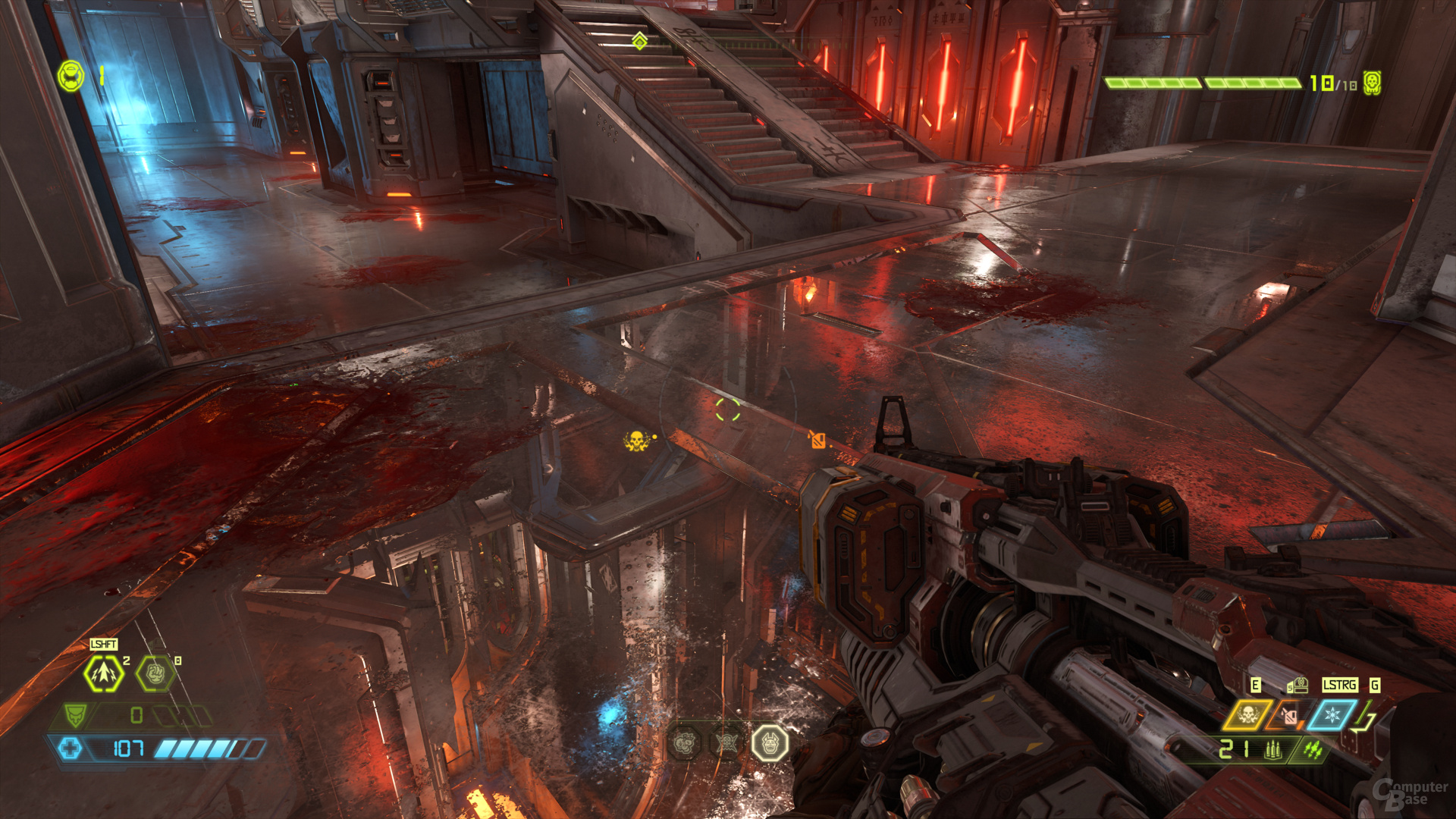 Raytracing A download
Raytracing A download
Image 1 of 16
 Raytracing On
Raytracing On  Raytracing Off
Raytracing Off 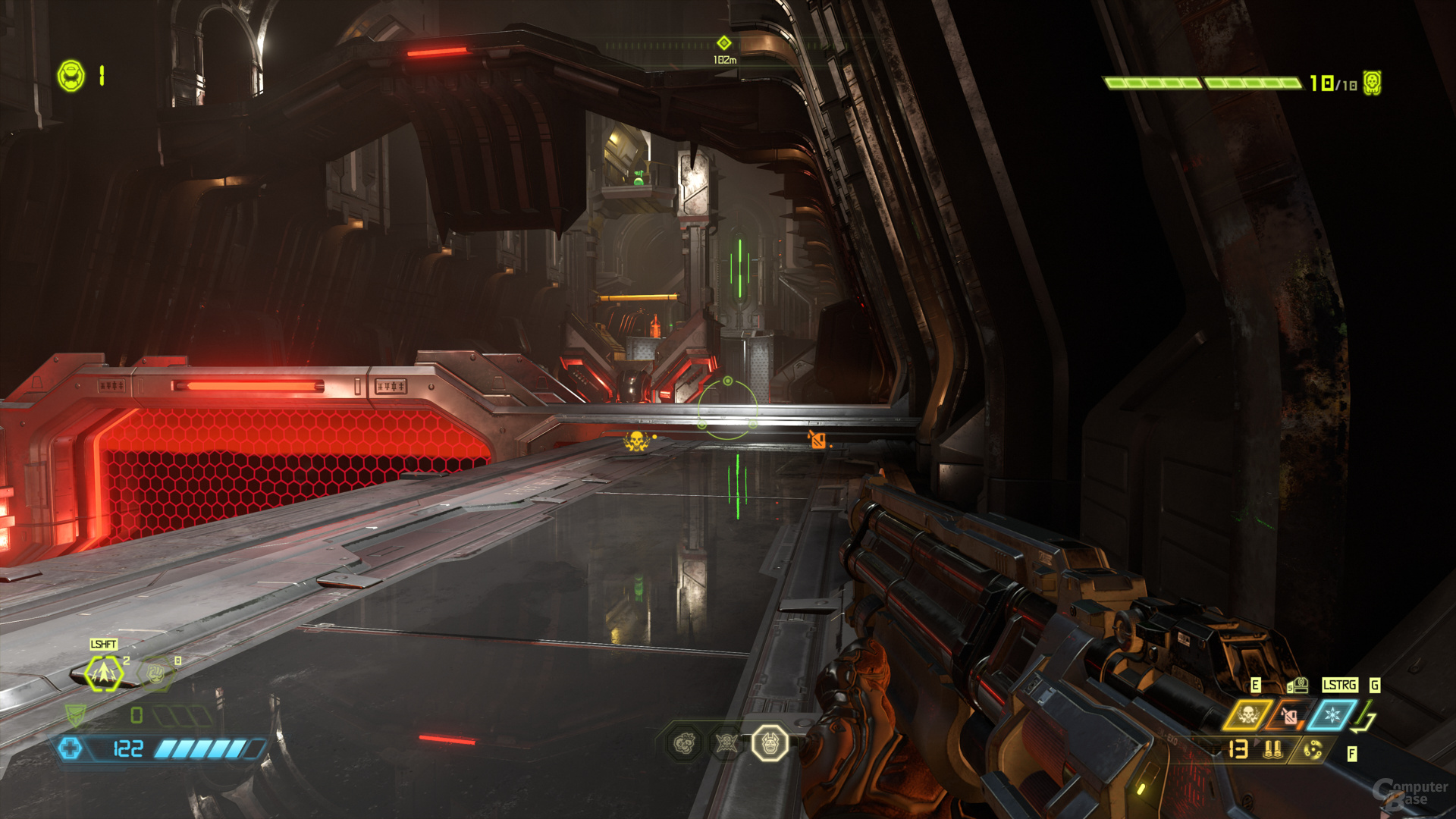 Raytracing On
Raytracing On 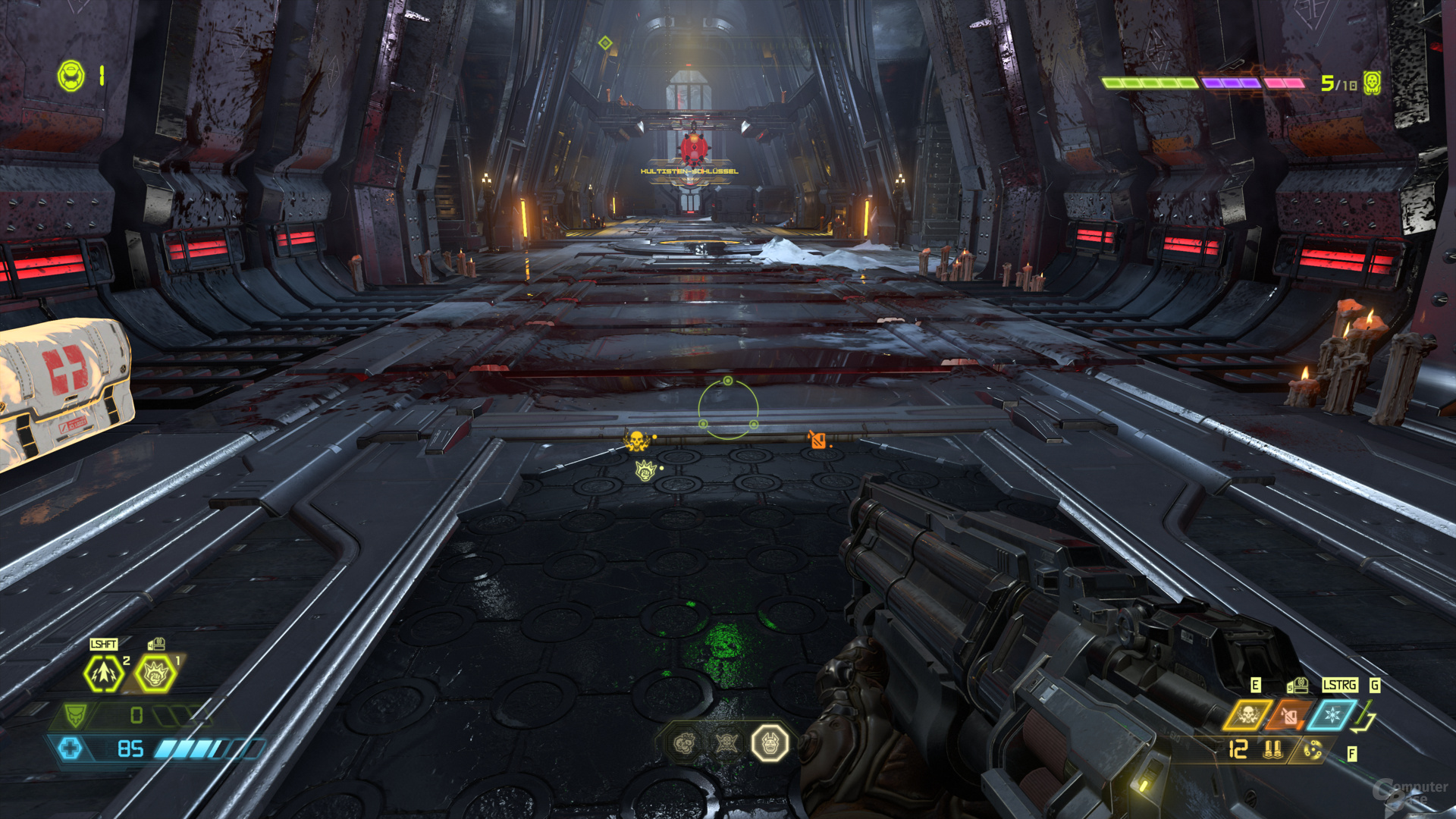 Raytracing On
Raytracing On  Raytracing On
Raytracing On  Raytracing off
Raytracing off  Raytracing on “ Raytracing on” >
Raytracing on “ Raytracing on” >
 Raytracing off
Raytracing off 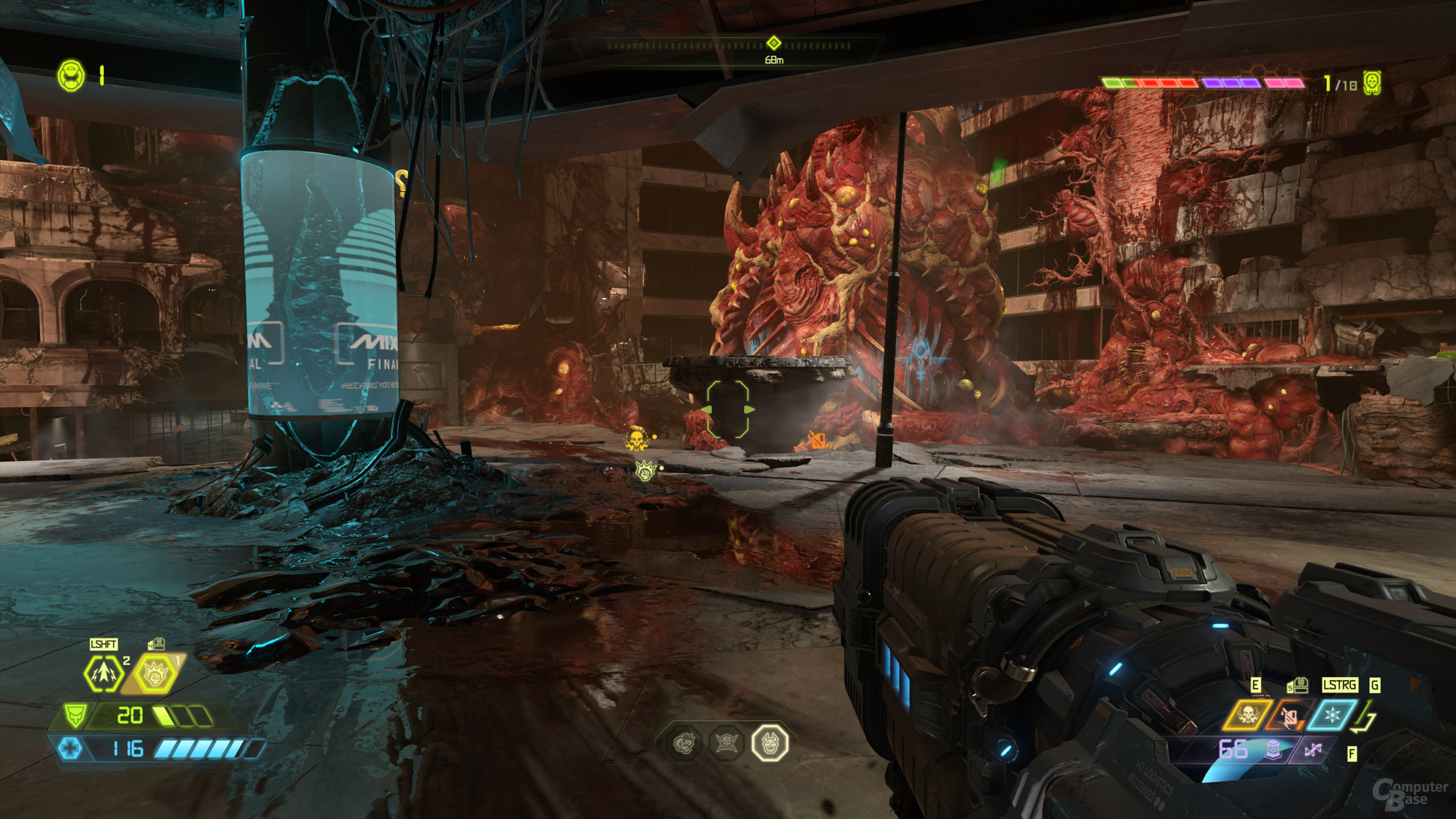 Raytracing Off
Raytracing Off 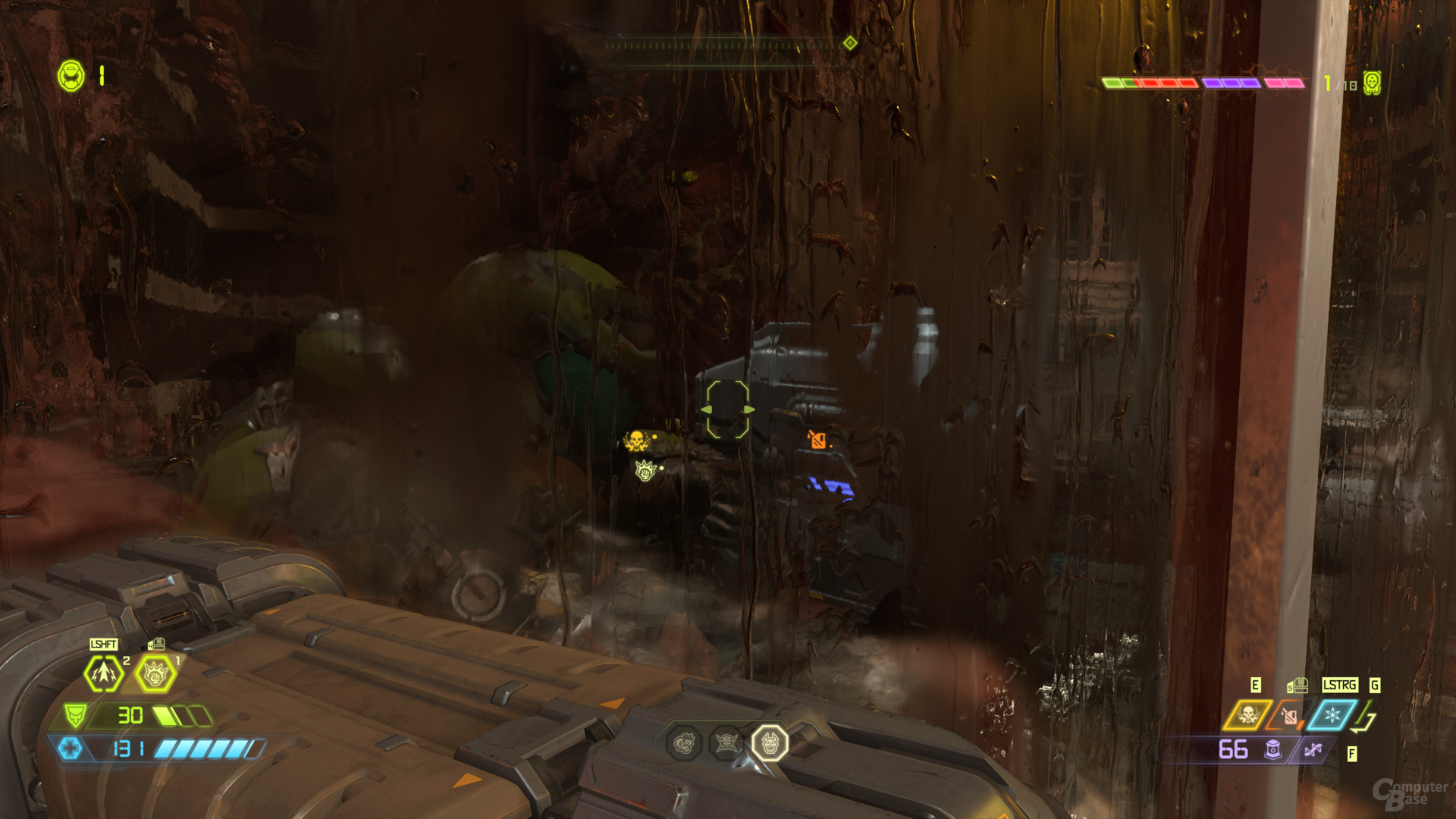 Raytracing On
Raytracing On Ray tracing needs a lot of VRAM – more than 8 GB
Ray tracing always needs graphics card memory and accordingly there are more and more games in which 3D accelerators with only 8 GB of VRAM run into problems. This also applies to Doom Eternal. While 8 GB is sufficient for maximum details without ray tracing, this no longer applies with activated ray reflections. Problems then arise even in Full HD. The game runs flawlessly from 10 GB.
Doom Eternal works with a different memory management than other titles. To prevent performance problems, Doom Eternal does not even allow a “texture pool setting” that is set too large. Without ray tracing, the game directly prevents the highest setting “Ultra Nightmare” on a 6 GB graphics card; Usable up to and including Ultra HD. With activated ray tracing, the shooter increases the memory requirements by about 1.3 GB, which has a big impact.
The full texture pool is also not available in Full HD
If the graphics card only has 8 GB, “Ultra Nightmare” cannot be selected in Ultra HD, but the highest details can be used up to and including WQHD. As benchmarks will show below, this has a massive negative impact on performance. This is also available with the lower setting “Nightmare”, only the texture pool on “Ultra” runs properly on an 8 GB graphics card – but only up to and including WQHD. “Ultra” can be set differently than “Nightmare” with an 8 GB graphics card in Ultra HD, but the full speed is only available from a texture pool on “High”.
To be fair, it must have been noted that “Ultra Nightmare” and “Nightmare” have no discernible advantages in terms of texture quality in Doom Eternal – at least none of the editors noticed. Simply turn up the quality and enjoy in Doom Eternal with an 8 GB graphics card, even if the raw performance of many 8 GB models would be sufficient for this. And if the texture pool is only turned back one level, there are performance problems. If you don't explicitly deal with it in Doom Eternal, you will only have a suboptimal gaming experience.
In addition, textures occasionally reload visibly when the texture pool is set to “High”. This limits the quality of a GeForce RTX 3070 and GeForce RTX 3070 Ti at the latest. The computing power of the graphics cards is high enough for Ultra HD, but there is still no full graphics quality on the models.
These are the performance differences for 8 GB VRAM
With the GeForce RTX 3060 Ti, which is used as a substitute for 8 GB graphics cards, the performance with texture pool to “Ultra Nightmare” is already massively reduced in Full HD. But the “Nightmare” setting doesn't work much better either, in 1,920 × 1,080 the average frame rate increases by 8 percent, the percentile FPS by 23 percent. Since Doom Eternal needs a high frame rate for a really smooth gaming experience, the feel of the game is not good even with “Nightmare”.
It gets a lot better with the Ultra setting. In Full HD the frame rate improves by 88 percent, in WQHD it is 63 percent. And then suddenly Doom Eternal also runs properly in WQHD on the GeForce RTX 3060 Ti, which is not even possible in Full HD with the ultra nightmare and nightmare setting. Further reduced texture details do not bring any increase.
«Previous RTX 3060 Ti, VRAM measurements – AVG-FPSRTX 3060 Ti, VRAM measurements – percentile FPS Next»
- RTX 3060 Ti, VRAM measurements – AVG-FPS unit: frames per second (FPS)
- 1,920 × 1,080:
- 8 GB @ texture pool high138.9
- 8 GB @ texture pool ultra138 , 8
- 8 GB @ texture pool nightmare73.7
- 8 GB @ texture pool ultra nightmare68.4
- 2,560 × 1,440:
- 8 GB @ texture pool Ultra105.7
- 8 GB @ texture pool high105.7
- 8 GB @ texture pool nightmare64.8
- 8 GB @ texture pool ultra nightmare36.8
- 3,840 × 2,160:
- 8 GB @ texture pool high59.1
- 8 GB @ texture pool Ultra51,2
- 8 GB @ Texture Pool Ultra Nightmare0,0Not possible
- 8 GB @ Texture Pool Nightmare0,0Not possible
- 1,920 × 1,080:
- RTX 3060 Ti, VRAM measurements – percentile FPS unit: frames per second (FPS)
- 1,920 × 1,080:
- 8 GB @ texture pool Ultra104,5
- 8 GB @ texture pool high104,5
- 8 GB @ texture pool nightmare51,1
< li class = "chart__row"> 8 GB @ Texture Pool Ultra Nightmare41.5
- 1,920 × 1,080:
- 2,560 × 1,440:
- 8 GB @ texture pool high78.0
- 8 GB @ texture pool Ultra77,9
- 8 GB @ texture pool nightmare46.2
- 8 GB @ texture pool ultra Nightmare21,6
- 3,840 × 2,160:
- 8 GB @ texture- Pool Hoch42.7
- 8 GB @ Texture Pool Ultra37.7
- 8 GB @ Texture Pool Ultra Nightmare0.0Not possible
- 8 GB @ texture pool nightmare0,0Not possible
In 3,840 × 2,160 graphics cards with 8 GB VRAM are slowed down, but also with the ultra setting. If the texture pool is reduced to “high” again, the frame rate increases by 15 percent.
On the next page: benchmarks with ray tracing and DLSS as well as the conclusion